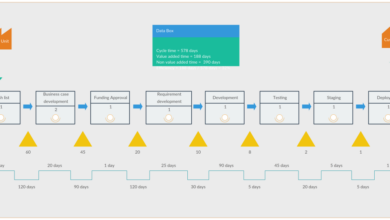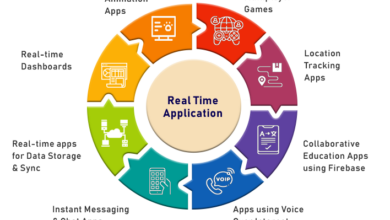
How Citizen Developers Stop Development Lifecycle Traffic Jams
How citizen developers stop development lifecycle traffic jams is a question that’s increasingly crucial in today’s fast-paced digital world. We’re all feeling the pressure – projects delayed, resources stretched thin, and that nagging sense of being stuck in a never-ending development cycle. But what if I told you there’s a way to alleviate this, a way to inject speed and efficiency into your development process?
The answer, my friends, lies in empowering citizen developers.
This isn’t about replacing professional developers; it’s about collaboration and strategic delegation. By equipping non-programmers with the tools and training to build simple applications, we can free up professional developers to focus on complex, high-value tasks. This post dives deep into the strategies, tools, and best practices that enable citizen developers to become vital contributors, ultimately clearing those pesky development bottlenecks and speeding up project delivery.
Defining Citizen Developer Bottlenecks
Citizen developers, those passionate employees who build apps and solutions outside of the traditional IT department, are a powerful force for innovation. However, their enthusiasm can sometimes be hampered by unexpected roadblocks, creating bottlenecks that slow down the entire development lifecycle. These bottlenecks manifest as “traffic jams,” where projects stall, deadlines are missed, and valuable resources are wasted. Understanding these hurdles is crucial to unlocking the full potential of citizen development.Citizen developer bottlenecks are often different from those faced by professional developers.
While professional developers might struggle with complex architecture or integration issues, citizen developers frequently encounter challenges related to access, training, and tool limitations. These differences in experience and resources directly impact project timelines and resource allocation, ultimately affecting the overall success of citizen development initiatives.
Types of Citizen Developer Bottlenecks
The following table compares the types of bottlenecks experienced by citizen developers versus professional developers, highlighting their impact and potential mitigation strategies. It’s important to note that these categories are not mutually exclusive; a single bottleneck can often stem from multiple underlying causes.
| Bottleneck Type | Citizen Developer Impact | Professional Developer Impact | Mitigation Strategy |
|---|---|---|---|
| Lack of Access to Resources | Limited access to data, APIs, or development environments can significantly slow down development and prevent the completion of projects. This can lead to frustration and a sense of being blocked. | While access issues can also affect professional developers, they typically have more established channels and support to resolve these issues. | Provide citizen developers with clear access guidelines, dedicated development environments, and appropriate data access permissions. Implement a robust self-service portal for accessing resources. |
| Inadequate Training and Support | Citizen developers often lack formal training in software development best practices. This can lead to inefficient coding, security vulnerabilities, and difficulties in debugging. | Professional developers typically receive ongoing training and have access to experienced colleagues for support. | Offer comprehensive training programs, mentorship opportunities, and readily available documentation and support resources. Establish a community forum for peer-to-peer learning and knowledge sharing. |
| Limited Tooling and Technology | Using outdated or inappropriate tools can hamper productivity and increase the risk of errors. Citizen developers may lack the expertise to select and effectively utilize the right tools. | Professional developers usually have access to a wider range of tools and are more skilled in choosing the appropriate technology for a given project. | Provide access to a curated set of approved development tools and platforms. Offer training on these tools and best practices for their use. Prioritize low-code/no-code platforms to simplify the development process. |
| Governance and Security Concerns | Concerns around data security and compliance can lead to delays in project approvals and restrictions on data access. This can significantly hinder the progress of citizen development projects. | While professional developers also face governance and security challenges, they typically operate within established frameworks and guidelines. | Establish clear governance policies and security protocols specifically tailored for citizen developers. Provide training on these policies and ensure regular audits to maintain compliance. Implement robust security measures in the development environment. |
Impact on Project Timelines and Resource Allocation
Bottlenecks in citizen development initiatives directly translate to delays in project completion. For instance, a lack of access to a crucial API can halt progress for weeks, pushing back deadlines and potentially impacting the overall business objectives. Furthermore, inefficient use of resources, such as time spent troubleshooting due to inadequate training, can lead to increased costs and wasted effort.
For example, a project requiring a simple database integration might take significantly longer than anticipated if the citizen developer lacks the necessary database skills, resulting in a longer time-to-market and increased resource expenditure.
Low-Code/No-Code Platforms and Their Role

Low-code/no-code platforms are revolutionizing the way citizen developers build applications. They offer a powerful approach to streamlining development, empowering individuals without extensive coding experience to create sophisticated solutions and significantly reduce bottlenecks in the development lifecycle. This democratization of software development is crucial for organizations looking to rapidly respond to changing business needs and leverage the innovative potential within their workforce.Low-code/no-code platforms dramatically simplify the development process by offering visual interfaces and drag-and-drop functionalities.
Instead of writing lines of complex code, citizen developers can use pre-built components, templates, and connectors to assemble applications. This visual approach significantly reduces the learning curve and accelerates the development cycle, enabling faster delivery of solutions. For example, a marketing team might use a low-code platform to create a custom landing page with integrated analytics, without needing to involve the IT department or wait weeks for development.
Similarly, a sales team could build a mobile app for tracking customer interactions, significantly improving efficiency.
Advantages of Low-Code/No-Code Platforms in Streamlining Development
Low-code/no-code platforms offer several key advantages that directly contribute to streamlining the development process for citizen developers. These platforms reduce the time and effort required for building applications, empowering individuals to focus on solving business problems rather than wrestling with complex code. They also foster collaboration and reduce reliance on specialized IT resources, enabling faster response to changing business demands.
The reduced development time translates directly into cost savings and quicker time-to-market for new solutions.
Examples of How Low-Code/No-Code Platforms Reduce Development Complexity
Consider the task of building a simple database-driven application. Traditional development would involve writing code for database interactions, user interface design, and application logic. A low-code platform, however, allows a citizen developer to visually design the database schema, drag and drop UI elements, and configure application logic using pre-built functions and connectors. This simplifies the process immensely, eliminating the need for extensive coding knowledge.
Another example is the creation of workflows. Instead of writing complex scripts, a citizen developer can use a visual workflow designer to define the steps and logic, automating business processes with ease.
Limitations of Low-Code/No-Code Platforms and Overcoming Them
While low-code/no-code platforms offer significant advantages, they also have limitations. One common limitation is the potential lack of flexibility for highly customized or complex applications. The pre-built components and templates might not always perfectly align with specific requirements. However, citizen developers can often overcome this limitation by combining multiple platforms or integrating with external APIs to extend functionality.
Another limitation can be vendor lock-in, where switching platforms becomes difficult due to the proprietary nature of the tools and data. Careful platform selection and data management strategies can mitigate this risk. Finally, security considerations are crucial. Citizen developers must adhere to best practices and utilize the platform’s built-in security features to protect sensitive data.
Best Practices for Selecting a Low-Code/No-Code Platform
Choosing the right low-code/no-code platform is crucial for success. Careful consideration of several factors is essential.
- Ease of Use: The platform should be intuitive and easy to learn, even for individuals with limited technical skills.
- Scalability: The platform should be able to handle increasing workloads and data volumes as the application grows.
- Integration Capabilities: The platform should seamlessly integrate with existing systems and applications within the organization.
- Security Features: Robust security features are essential to protect sensitive data and comply with industry regulations.
- Support and Documentation: Comprehensive support and documentation are crucial for troubleshooting issues and ensuring successful implementation.
- Cost: Consider the licensing costs, implementation expenses, and ongoing maintenance fees.
Collaboration and Communication Strategies
Citizen development thrives on collaboration. Without effective communication and clearly defined roles, even the most talented citizen developers can create bottlenecks and frustrate the development lifecycle. Successfully integrating citizen-developed applications requires a strategic approach to communication, responsibility, and feedback. This section Artikels key strategies for building a collaborative and efficient citizen development ecosystem.Effective communication is the cornerstone of any successful citizen development initiative.
It bridges the gap between citizen developers, IT professionals, and business stakeholders, ensuring everyone is on the same page and working towards shared goals. Without clear communication channels, misunderstandings can easily arise, leading to delays, duplicated efforts, and ultimately, project failure.
Communication Channels for Citizen Developers
Establishing dedicated communication channels is crucial for facilitating seamless interaction between citizen developers, IT, and business stakeholders. These channels should be easily accessible and cater to different communication styles. For example, a project management platform like Jira or Asana can centralize task assignments, progress tracking, and issue resolution. Regular meetings, both formal and informal, provide opportunities for face-to-face interaction and brainstorming.
Citizen developers are awesome for clearing those IT bottlenecks! They can whip up solutions quickly, freeing up professional developers for more complex tasks. This is especially true when leveraging platforms like those discussed in this insightful article on domino app dev the low code and pro code future , which highlights how low-code/no-code tools empower citizen developers.
Ultimately, this collaborative approach significantly reduces development lifecycle traffic jams, getting things done faster and more efficiently.
Instant messaging platforms like Slack or Microsoft Teams can enable quick questions and updates, fostering a sense of community and shared responsibility. Finally, a knowledge base or wiki can store documentation, best practices, and frequently asked questions, reducing the need for repeated explanations.
Roles and Responsibilities in Citizen Development
Clearly defined roles and responsibilities prevent confusion and ensure accountability. This is especially critical in a citizen development environment where individuals from various departments may be involved. A well-defined RACI matrix (Responsible, Accountable, Consulted, Informed) can help clarify who is responsible for what tasks. For example, citizen developers might be responsible for building the application, while IT professionals might be accountable for ensuring its security and integration with existing systems.
Business stakeholders would be consulted on requirements and functionality, while other departments might be informed of the application’s launch and impact. This structured approach ensures that everyone understands their role and contribution to the overall success of the project.
Version Control and Code Integration
Efficient version control is essential for managing multiple developers working on the same project. Utilizing a version control system like Git allows for collaborative development, tracking changes, and reverting to previous versions if necessary. A robust code integration process, such as continuous integration and continuous delivery (CI/CD), streamlines the deployment process and reduces the risk of conflicts. This ensures that code changes are tested and integrated smoothly, minimizing disruption to the development lifecycle.
Regular code reviews can also identify potential issues early on, improving code quality and reducing the likelihood of errors.
Implementing a Robust Feedback Mechanism
A well-designed feedback mechanism is critical for continuous improvement. This should include multiple channels for gathering feedback, such as user surveys, feedback forms, and regular user testing sessions. The feedback collected should be analyzed and used to identify areas for improvement in the application. A dedicated team should be responsible for reviewing and prioritizing the feedback, ensuring that the most critical issues are addressed promptly.
Transparency is key – users should be kept informed about the progress made on their feedback, fostering trust and engagement. Regular updates on improvements implemented based on user feedback demonstrate responsiveness and commitment to quality.
Governance and Security Measures
Citizen development offers incredible speed and agility, but without proper governance and security measures, it can quickly become a significant risk. Ignoring these crucial aspects can lead to security breaches, compliance violations, and a general erosion of trust in the citizen development initiative. Establishing a robust framework is vital to harness the benefits while mitigating potential downsides.Implementing strong governance and security is not about stifling innovation; it’s about enabling it responsibly.
Think of it as providing guardrails for a race car – they allow for speed and excitement while ensuring safety and control. A well-defined structure empowers citizen developers to build innovative solutions while protecting the organization’s data and reputation.
Essential Security Considerations for Citizen-Developed Applications
A comprehensive security checklist should be implemented from the initial stages of project conception. This checklist should be readily accessible to all citizen developers and regularly reviewed to adapt to emerging threats. Failure to address security early can lead to costly remediation efforts later.
- Data Security: Implement robust data encryption both in transit and at rest. Regularly assess data access permissions to ensure only authorized users can access sensitive information. Employ data loss prevention (DLP) tools to monitor and prevent unauthorized data exfiltration.
- Authentication and Authorization: Utilize strong authentication mechanisms such as multi-factor authentication (MFA) to protect against unauthorized access. Implement role-based access control (RBAC) to limit access to application functionalities based on user roles and responsibilities.
- Vulnerability Management: Regularly scan applications for vulnerabilities using automated tools and penetration testing. Address identified vulnerabilities promptly and thoroughly. Integrate security testing into the citizen development lifecycle.
- Compliance: Ensure compliance with relevant industry regulations and standards, such as GDPR, HIPAA, or PCI DSS, depending on the nature of the data processed by the application. Document compliance efforts and regularly audit the application’s security posture.
- Application Security Testing (AST): Integrate automated security testing into the development pipeline. This can include static application security testing (SAST) and dynamic application security testing (DAST) to identify vulnerabilities early in the development process.
Establishing Clear Governance Guidelines
Clear governance guidelines are the cornerstone of a successful citizen development program. These guidelines should define roles, responsibilities, and processes to ensure alignment with the organization’s overall IT strategy and risk tolerance. Without clear guidelines, citizen development can quickly become chaotic and unmanageable.
- Project Approval Process: Establish a formal process for evaluating and approving citizen development projects. This process should include assessing the project’s feasibility, risk, and alignment with business objectives.
- Development Standards: Define coding standards, security best practices, and application lifecycle management (ALM) processes that citizen developers must adhere to. This ensures consistency and maintainability of applications.
- Training and Support: Provide citizen developers with adequate training on security best practices, low-code/no-code platform capabilities, and the organization’s governance guidelines. Offer ongoing support and mentorship to help them succeed.
- Application Inventory and Monitoring: Maintain an inventory of all citizen-developed applications. Implement monitoring tools to track application performance, security, and usage. This allows for proactive identification and mitigation of potential issues.
- Regular Audits: Conduct regular audits to ensure compliance with governance guidelines and security best practices. These audits should assess the security posture of citizen-developed applications and identify areas for improvement.
Ensuring Compliance with Regulations and Standards
Compliance with relevant regulations and standards is paramount. Failure to comply can result in significant penalties and reputational damage. A proactive approach to compliance ensures that citizen-developed applications meet the necessary requirements.For example, an application handling sensitive customer data must comply with GDPR, requiring specific data protection measures. Similarly, applications processing financial transactions must adhere to PCI DSS standards.
Understanding and implementing these regulations from the outset is crucial. Regular compliance checks and audits are necessary to maintain compliance.
The Role of IT in Overseeing Citizen Development
IT plays a critical role in overseeing and supporting citizen development initiatives. IT’s responsibility is not to stifle innovation but to enable it securely and responsibly. This involves providing the necessary infrastructure, tools, training, and guidance to citizen developers. IT should also monitor the security and performance of citizen-developed applications to ensure they align with organizational standards.IT acts as a central point of control, providing governance, security oversight, and support.
They are responsible for establishing and enforcing security policies, providing training and resources to citizen developers, and monitoring the performance and security of applications. Their involvement is essential to ensure that citizen development initiatives are successful and do not compromise the organization’s security posture.
Training and Support Mechanisms

Empowering citizen developers requires a robust training and support ecosystem. Without proper guidance and ongoing assistance, the enthusiasm and productivity of these valuable contributors can quickly wane, leading to abandoned projects and frustrated users. A well-structured program ensures citizen developers possess the necessary skills and resources to build high-quality, secure applications that integrate seamlessly with existing systems.A comprehensive training program must be multifaceted, addressing both technical and soft skills.
Effective mentoring, a readily accessible knowledge base, and consistent support mechanisms are crucial components of this program.
Citizen Developer Training Program Curriculum, How citizen developers stop development lifecycle traffic jams
The curriculum should be modular, allowing for flexibility based on the citizen developer’s existing skills and the specific tools they will be using. It should start with foundational concepts and progressively introduce more advanced topics. For example, an introductory module might cover basic programming logic, data structures, and user interface design principles. Subsequent modules could focus on specific low-code/no-code platforms, security best practices, application deployment, and integration with existing systems.
Hands-on exercises and real-world case studies should be incorporated throughout the training to reinforce learning and build practical experience. A final module focusing on application lifecycle management, including testing, deployment, and maintenance, is essential.
Mentoring Programs for Citizen Developers
Mentoring provides invaluable support and guidance to citizen developers. Pairing experienced developers or IT professionals with citizen developers allows for personalized instruction, troubleshooting, and code reviews. Mentors can help citizen developers avoid common pitfalls, learn best practices, and improve the quality of their applications. A successful mentoring program should establish clear roles and responsibilities for both mentors and mentees, provide regular check-ins, and offer opportunities for feedback and knowledge exchange.
For instance, a mentor could guide a citizen developer through the process of designing a user-friendly interface, or help them debug a complex piece of code. This personalized support significantly reduces the learning curve and improves the overall success rate of citizen development projects.
Knowledge Base and Community Forum
A central repository of information and a vibrant community forum are essential for fostering collaboration and knowledge sharing among citizen developers. The knowledge base should contain comprehensive documentation on the low-code/no-code platforms, best practices, coding standards, troubleshooting guides, and frequently asked questions. The community forum provides a platform for citizen developers to ask questions, share their experiences, collaborate on projects, and learn from each other.
This peer-to-peer support network can be invaluable, fostering a sense of community and accelerating the learning process. Imagine a scenario where a citizen developer encounters a problem while building an application. By posting their question on the forum, they can quickly receive assistance from other citizen developers or experienced mentors, significantly reducing downtime and frustration.
Ongoing Support and Maintenance Strategies
Ongoing support and maintenance are crucial for ensuring the long-term success of citizen-developed applications. Different approaches can be adopted, depending on the complexity of the application and the resources available. These could include dedicated support teams, self-service portals with FAQs and troubleshooting guides, or a combination of both. Regular updates and security patches are also essential to address vulnerabilities and ensure the application remains functional and secure.
For example, a company might establish a ticketing system for citizen developers to report issues or request assistance, ensuring timely resolution and preventing application downtime. Another approach might involve creating comprehensive documentation and training materials for citizen developers to handle minor maintenance tasks independently. This reduces the burden on IT staff and empowers citizen developers to take ownership of their applications.
Measuring Success and Identifying Areas for Improvement
Successfully implementing a citizen development program requires more than just enabling users to build apps; it demands a robust system for measuring its impact and identifying areas needing attention. Without a clear understanding of what constitutes success and how to identify shortcomings, your citizen development initiative risks becoming disorganized and ultimately failing to deliver its promised benefits. This section focuses on establishing metrics, gathering feedback, and implementing continuous improvement strategies.
Tracking the effectiveness of your citizen development program necessitates a strategic approach to measurement. Simply counting the number of apps created isn’t sufficient. A comprehensive evaluation needs to encompass both quantitative and qualitative data to provide a holistic view of the program’s success. This includes assessing the impact on business outcomes, user satisfaction, and the overall efficiency of the development process.
Key Performance Indicators (KPIs) for Citizen Development
Defining and tracking the right KPIs is crucial for demonstrating the value of citizen development. These metrics should align with your overall business objectives and provide insights into various aspects of the program. For example, you might track the number of apps deployed, the time taken to develop and deploy applications, the reduction in IT backlog, cost savings, user adoption rates, and improvements in business processes.
A balanced scorecard approach, considering financial, customer, internal process, and learning and growth perspectives, offers a comprehensive view. For instance, a KPI like “Reduced IT backlog by 20% within six months” provides a quantifiable measure of success. Another example could be “90% user satisfaction rating for citizen-developed applications, as measured by post-deployment surveys.”
Collecting Feedback from End-Users
Gathering feedback from end-users is essential for continuous improvement. Multiple methods can be employed, including post-implementation surveys, user interviews, focus groups, and feedback forms integrated directly into the applications. Surveys can assess user satisfaction, identify areas for improvement in the application’s functionality and usability, and gauge the overall impact on their workflow. User interviews provide deeper insights into user experiences and can uncover hidden issues.
Focus groups allow for more interactive discussions and collaborative problem-solving. Integrating feedback forms within the applications themselves allows for real-time feedback and quick responses to issues. For example, a simple five-star rating system with an optional text field for comments can provide valuable immediate feedback.
Strategies for Continuous Improvement
Continuous improvement is vital for maximizing the return on investment of a citizen development program. Regularly reviewing KPIs, analyzing user feedback, and conducting process audits will help identify areas for optimization. Implementing agile methodologies, such as iterative development and sprint reviews, fosters continuous feedback and adaptation. Regular training and upskilling opportunities for citizen developers will ensure they stay current with best practices and emerging technologies.
Establishing a feedback loop where users can easily report bugs or suggest improvements ensures ongoing refinement of the applications and the development process itself. For example, a company might implement a “Kaizen” event, where a dedicated team reviews the citizen development process and identifies areas for improvement.
Analyzing the Impact of Citizen Development on Business Outcomes
Analyzing the impact of citizen development on business outcomes requires a structured approach. This involves defining clear business objectives before launching the program and then tracking progress against those objectives using relevant KPIs. For example, if the objective is to improve customer service response times, the impact could be measured by tracking the average time taken to resolve customer issues before and after the implementation of a citizen-developed application.
A similar approach can be used to measure the impact on other business outcomes, such as increased sales, improved operational efficiency, and reduced costs. The analysis should consider both direct and indirect impacts of the citizen-developed applications. For instance, a reduction in manual data entry could lead to direct cost savings and indirectly improve data accuracy, potentially resulting in better decision-making.
Last Word: How Citizen Developers Stop Development Lifecycle Traffic Jams

Unclogging the development lifecycle isn’t just about faster delivery; it’s about empowering your entire organization. By embracing citizen development, you unlock a wellspring of untapped creativity and efficiency. Remember, the key lies in careful planning, robust support systems, and a clear understanding of roles and responsibilities. With the right approach, citizen developers can transform your development process, turning frustrating traffic jams into a smooth, efficient highway to success.
So, are you ready to unleash the power of your citizen developers?
General Inquiries
What are the biggest risks associated with citizen development?
The biggest risks revolve around security vulnerabilities, data breaches, and a lack of compliance with company standards. Robust governance, security training, and careful selection of low-code/no-code platforms are crucial for mitigation.
How can I ensure data security in citizen-developed applications?
Prioritize secure coding practices, utilize built-in security features of your low-code/no-code platform, and implement strong access controls. Regular security audits are also essential.
What if citizen developers create applications that don’t meet business needs?
Establish a clear process for requirements gathering, design reviews, and user testing. Involve stakeholders throughout the development process to ensure alignment with business goals.
How do I measure the success of my citizen development initiative?
Track key performance indicators (KPIs) such as the number of applications developed, time saved, cost reduction, and user satisfaction. Regularly assess the impact on business outcomes.




